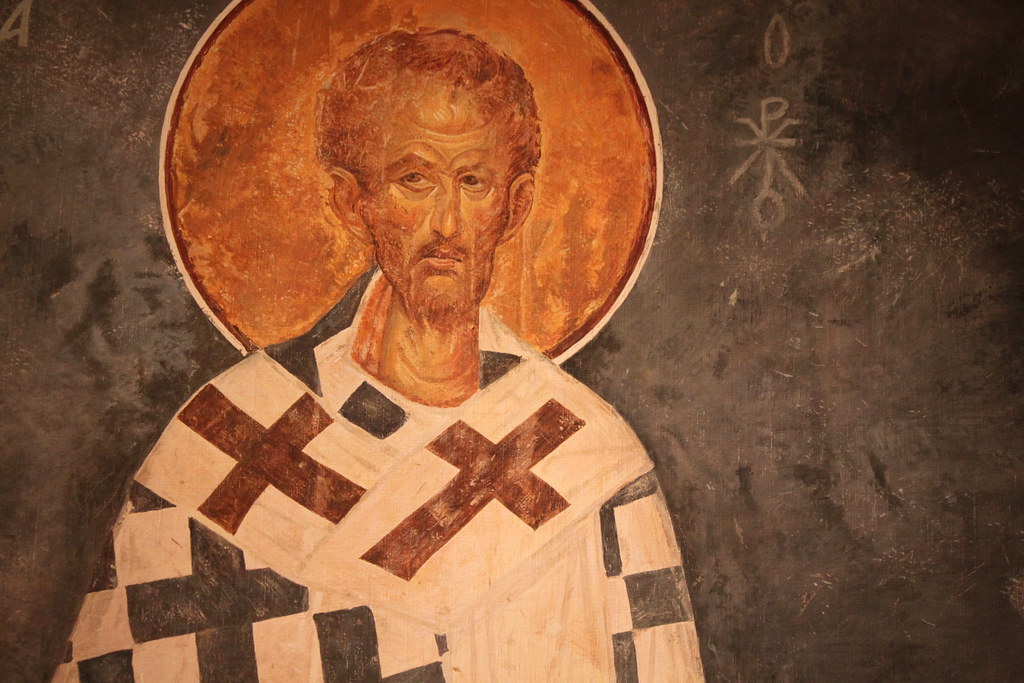Then you shall bring Aaron and his sons to the door of the tent of meeting, and shall wash them with water, and put upon Aaron the holy garments, and you shall anoint him and consecrate him, that he may serve Me as a priest. You shall bring his sons also and put coats on them, and anoint them, as you anointed their father, that they may serve me as priests: and their anointing shall admit them to a perpetual priesthood throughout their generations.
Exodus 40:12-15
During the month of February, we are going to have two ordinations in the parish where I serve in Tampa. A young man will be getting ordained to the Holy Diaconate on one day and to the Holy Priesthood on the following day. This occasion prompts me to write a few reflections on the priesthood and the sacrament of ordination.
The parish priest is the central figure in an Orthodox Church community. He stands in front of the altar and celebrates the Divine Liturgy and other sacraments. He offers sermons. He visits the sick. He leads the life of the community.
Some communities have deacons that assist the priest. Occasionally a bishop will visit each parish. Where does this all come from? Why do we have bishops, priests and deacons? Other churches function without these roles, why are they so central to our church?
First, let us clarify the term “priesthood.” In Greek this word is “ierosini” and in English, that word is commonly translated as “clergy.” In the Orthodox Church, there are three ranks of priesthood—deacon, presbyter and bishop. In Greek these words are diakonos, presvyteros and episkopos. The confusion comes because we call the “presbyter” a priest. Priesthood refers to all those who are sacramentally ordained to serve God.
The purpose of the priesthood is that there are people who are set apart from the others to serve God on a permanent basis. There is an “ordination” or a formal ceremony by which someone enters into the priesthood. The appointment as priest is permanent, it is not for a period of time. Thus, the person entering into the priesthood is embracing a permanent change to his lifestyle and making his life’s work service to God. The role of the priest is to stand between God and the people. This does not make the priest some kind of “god.” People can certainly pray to God without the priest being present. There is, however, a formal way that we worship. And the job of the priest is to lead the worship. There are certain things we believe, and it is the job of the priest to teach us these things and to safeguard our beliefs from being altered.
The foundation of the priesthood is in the Old Testament, well before the time of Christ. In Exodus 40:12-15, we read that Aaron and his sons were chosen to be the priests. Aaron was from the tribe of Levi, and thus the priests had to come from this particular tribe. The book of Leviticus reads like a handbook for priests, the Levites. In Exodus 40, we read about a formal investiture (the first ordination) where Aaron and his sons were washed with water, anointed and consecrated. They were vested in holy garments, the first vestments.
The Old Testament is foundational to the New Testament. The traditions of the priesthood, vestments and ordination are all from the Old Testament. Even the vestments worn by Orthodox priests have their foundation in the priesthood of the Old Testament. There was a primitive type of stole, a belt and garments to go over the wrists. Only the priests were allowed into the Holy of Holies, what today would be the Holy Altar. There were rules and duties of the priests, prescribed rituals that had to be done in a very specific way. This prefigures the structured services that we have. There was also a certain ritual for the Sabbath, foreshadowing our sacred day of worship which is now Sunday. And there were major feasts, like Passover and Pentecost, where there was a cycle of rituals, and of course this foreshadows our seasons like Lent and our major feasts like Pascha, which is preceded by a week of services that we call Holy Week.
Lord, thank You for Your amazing plan for our salvation, that includes rituals to guide us and ordained priests to lead us. Thank You for modern Traditions that have their foundation thousands of years in the past. Thank You for Your guiding hand over the evolution of how we are led in worship that brings us to the way we do it today. Help me to understand more deeply how we are to worship. Bless all those whom You have called to serve in the priesthood. Bless and guide their steps to Your glory, always now and forever and to the ages of ages. Amen.
It is so amazing that the foundation of what today is the Holy Priesthood of the Orthodox Church has its foundation more than one thousand years before Christ, in the priesthood of Aaron and his sons.
